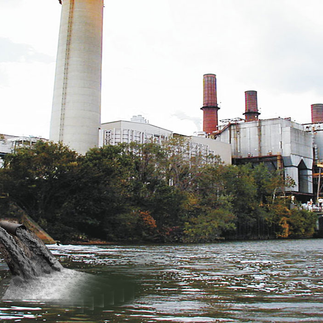Understanding BDD Electrochemical Oxidation
- kunyapak
- Aug 6
- 3 min read
Updated: Aug 7
If you’ve ever wondered how advanced electrochemical water treatment works especially with Boron-Doped Diamond (BDD) electrodes this post breaks it down for you in simple terms.
BDD electrochemical oxidation is one of the most powerful methods available today for treating highly contaminated industrial wastewater. Whether it’s from pharmaceutical factories, textile dyeing, petrochemical processes, or battery production, these waters are tough complex, toxic, and hard to biodegrade. That’s where BDD comes in.
So, what exactly is BDD?
BDD stands for Boron-Doped Diamond, which is a type of diamond electrode that’s been specially engineered to conduct electricity. It’s not the diamond you’d find in jewelry it’s made in a lab using a method called chemical vapor deposition (CVD).

Why use diamond in water treatment? Because it’s incredibly stable, chemically resistant, and can generate extremely powerful oxidizing species (like hydroxyl radicals) that break down almost anything organic in the water turning them into carbon dioxide and water.
Why is it so effective?
BDD has the highest oxygen evolution potential (OEP) among common anode materials (typically 2.3–2.8 V vs SHE). This allows it to operate in a regime where it favors oxidation of pollutants rather than water splitting, making it highly efficient for degrading persistent organic pollutants (POPs).
Advantages include:
Generation of strong oxidants (•OH, O₃, SO₄•−)
Wide electrochemical window
Chemical inertness, ideal for harsh conditions (acid, salt, heat)
Low background current and minimal fouling
Excellent long-term stability
Operates without the need for added chemical oxidants
According to Martínez-Huitle & Panizza (2018), BDD outperforms traditional active anodes (e.g., IrO₂, PbO₂) in treating pharmaceuticals, pesticides, dyes, and endocrine-disrupting compounds.

A Look Inside the Process
The system uses a DC power supply to drive oxidation reactions at the electrode surface. Contaminants are destroyed either:
Directly on the BDD surface through electron transfer, or
Indirectly by oxidants like hydroxyl radicals generated in situ.
These systems can be operated in batch or continuous mode, depending on your application.
What makes it impressive is that BDD doesn’t need chemical oxidants like chlorine or hydrogen peroxide it generates its own.
Performance factors include:
Current density
pH and temperature
Electrolyte composition
Reaction time and reactor design
Proper tuning of these parameters can yield >90% COD removal in many applications.
Comparison: BDD vs Other Electrodes
Electrode Material | OEP (V vs SHE) | Lifetime | Cost | Fouling Resistance |
IrO₂/Ti | ~1.5–1.8 | Moderate | Medium | Moderate |
PbO₂ | ~1.9–2.2 | High | Medium | Low |
SnO₂ | ~1.9 | Low | Low | Low |
BDD | 2.3–2.8 | Very High | High | Excellent |
Source: Comninellis, 1994; Martínez-Huitle & Panizza, 2018
Real-World Applications
BDD Electrochemical Oxidation is used across various industries to treat complex, high-strength wastewater and persistent organic pollutants. Key applications include:
Industrial wastewater: Especially from pharmaceutical, textile, and chemical sectors where BDD helps reduce COD, color, and toxins.
Emerging contaminants: Effective against hard-to-remove substances like PFAS, antibiotics, and pesticides.
Hospital wastewater: Degrades pharmaceuticals and supports disinfection.
ZLD systems: Acts as a final polishing step before reuse or discharge.
Hybrid processes: Combines well with AOPs or membranes for enhanced treatment.
Its stability, efficiency, and chemical-free operation make BDD a powerful option for modern water treatment challenges.
Where is it used?
Treating high-COD industrial wastewater
Advanced oxidation after biological treatment
High-salinity wastewater (e.g. lithium battery, textile, etc.)
Zero Liquid Discharge (ZLD) systems
Research and pilot studies on persistent organic pollutants
It’s also increasingly used in combination with EC (electrocoagulation), AOPs, or membrane systems to form integrated treatment processes.
Want to try it yourself?
At YASA ET, we’ve developed lab-scale equipment to help researchers, engineers, and water professionals explore BDD technology hands-on.

Try our EOXCell test kit with BDD + Titanium electrodes
Modular design – plug & play
Customize with your choice of electrodes: Iron, Aluminum, Ti, BDD, Graphene, etc.
Perfect for lab trials or feasibility studies
Drop us a message at info@yasa.ltd🌍 Visit: www.yasa.ltd
🎥 See how the test kit works: 👉 What’s included👉 How to run a test
Sources & Technical Reference
Innovation Pioneer – “全面解读BDD电极电解氧化法”, July 2024
Xinfeng Technology: BDD Electrode Production Handbook
Martínez-Huitle, C.A. & Panizza, M. (2018), Electrochemical Oxidation with BDD Electrodes: A Review
Oturan, M.A., & Aaron, J.-J. (2014). Advanced Oxidation Processes in water/wastewater treatment: principles and applications. A review. Critical Reviews in Environmental Science and Technology, 44(23), 2577–2641.











Comments